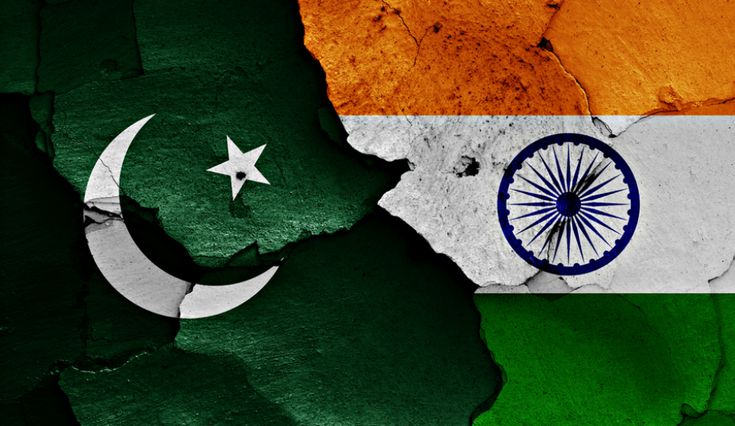Latest Pakistan vs India update reveals shocking death toll—find out how many lives were lost in the tragic event.

Introduction
Let’s face it – the India-Pakistan dynamic has never been simple. Two nuclear neighbors with a shared history, deep cultural roots, and decades of tension. In 2025, that tension reaches a boiling point. The world holds its breath as both sides inch closer to a full-scale war. But how did it come to this?
Root Causes Behind the 2025 Conflict
Kashmir – Still the Epicenter
Even in 2025, Kashmir remains the flashpoint. Despite attempts at peace, cross-border shelling and insurgency-related deaths kept mounting. The region’s strategic value and symbolic importance make it a hotbed for political agendas.
Water Disputes – The Silent Trigger
The Indus Waters Treaty has been under strain for years. Climate change, glacier melt, and dam constructions led to allegations of water theft, further inflaming hostilities.
Proxy Battles and Terror Incidents
Terror attacks in Indian cities traced back to groups operating in Pakistan became the tipping point. Both nations accused each other of fueling unrest, pushing them further toward open confrontation.
Political Climate Leading up to 2025
Change in Leadership in Both Countries
New, hardline governments came to power in both Islamabad and New Delhi, with a strong “zero-tolerance” stance. This rigid leadership style eliminated space for diplomatic backchannels.
Influence of External Powers – China, USA, Russia
China backed Pakistan strategically, while India leaned on its growing alliance with the United States. Russia remained ambiguous, selling arms to both sides while calling for peace.
Role of Domestic Politics and Nationalism
Populist narratives took center stage. Leaders used nationalism to unite distracted populations, redirecting attention from economic troubles and civil unrest.
Military Strength Comparison in 2025
Pakistan’s Defense Capabilities
With enhanced drone warfare, advanced missile tech, and Chinese support, Pakistan’s military grew more agile. Their intelligence services remained a wildcard.
India’s Military Modernization
India’s investment in AI-powered weaponry, Rafale jets, and naval upgrades gave it a significant upper hand. Its military doctrine focused on swift strikes and rapid mobilization.
Nuclear Deterrence and Risks
Both sides possess second-strike capabilities. Though war remained conventional at first, the nuclear threat loomed large in every skirmish, especially as borders heated up.
The War Unfolds – Key Events and Timeline
First Strikes and Initial Skirmishes
It began with a border skirmish gone wrong in Poonch. A few lost lives turned into hundreds as both sides retaliated with force. Within days, air strikes followed.
Air Battles and Naval Confrontations
Dogfights lit up the skies while naval ships clashed in the Arabian Sea. Blockades and missile strikes disrupted maritime trade, drawing international concern.
Ground Operations in Border Areas
Tanks rolled into disputed territories. Civilians fled in droves. The LOC turned into a battlefield with strategic towns changing hands daily.
Media and Public Reaction
Social Media Frenzy
Hashtags like #War2025 and #IndoPakConflict trended globally. Fake news spread like wildfire, inflaming passions and polarizing public opinion.
Nationalism vs. Peace Movements
While one section of society screamed for revenge, peace activists held candle marches and called for restraint. The world watched in confusion and fear.
Impact on Civilians and Daily Life
With blackouts, curfews, and food shortages, life on both sides of the border became a nightmare. Schools closed. Markets emptied. Anxiety spiked.
Global Reactions and Involvement
United Nations’ Role
The UN tried mediating but failed to stop the fighting initially. A resolution calling for ceasefire passed only after heavy lobbying and pressure.
Mediation Attempts by Superpowers
The U.S. sent envoys. China pushed for a regional summit. But trust was low. Eventually, a backchannel involving Turkey and Saudi Arabia showed promise.
Sanctions, Treaties, and Diplomatic Fallout
International sanctions hit hard. Tourism, tech exports, and even student visas were frozen. Both economies suffered. Diplomats were expelled left and right.
Economic Consequences of the War
Impact on Trade and Stock Markets
The markets crashed. The Rupee and Pakistani Rupee both tanked. Cross-border businesses shut down. Investors fled.
Humanitarian Crisis and Refugee Surge
Hundreds of thousands became refugees. Camps were set up. International NGOs warned of looming health crises.
Long-Term Economic Damage
Years of growth were wiped out in weeks. Infrastructure damage in border cities could take decades to rebuild.
Cyber Warfare – The Invisible Battlefront
Espionage and Intelligence Hacks
Government databases, military systems, even civilian infrastructure were hacked. Information warfare became a key battleground.
Disruption of Infrastructure
Banks, airports, and energy grids faced cyberattacks, leading to mass confusion and panic.
Propaganda and Misinformation
Both countries used deepfakes, false narratives, and AI bots to manipulate public sentiment. Truth became a casualty of war.
Peace Talks and Ceasefire Agreements
Role of Neutral Countries in Diplomacy
Qatar and Turkey brokered initial talks. Switzerland hosted follow-ups. A fragile truce was finally declared.
Ceasefire Terms and Border Redefinition
Both sides agreed to pull back troops. The LOC was reinforced. Neutral observers were stationed to monitor compliance.
Rebuilding Trust and Relations
Confidence-building measures began. Prisoner swaps, hotline reactivation, and joint humanitarian efforts helped ease tensions.
Lessons Learned
Strategic Missteps and Misunderstandings
Lack of clear communication led to misjudgments. Leaders admitted later that ego and haste made things worse.
Importance of Dialogue and Communication
One lesson rang clear: talk before you shoot. Diplomacy, even if slow, is better than destruction.
Avoiding Future Conflicts
A mutual non-aggression pact was proposed. Think tanks from both nations pushed for academic and cultural exchanges.
The Human Side of War
Stories from the Frontlines
Soldiers spoke of friendship with enemies. Some even refused to shoot. Humanity flickered in the darkest corners.
Families Torn Apart
Cross-border marriages, friendships, and businesses collapsed overnight. Many still haven’t reunited.
PTSD and Mental Health Impact
Soldiers and civilians alike suffered. Trauma centers reported a spike in PTSD cases across the region.
Could This War Have Been Prevented?
Missed Diplomatic Opportunities
Backchannel talks were ignored. UN warnings were dismissed. A few meetings could have changed history.
Red Flags Ignored by Governments
Intelligence reports predicted escalation. Yet, political gain trumped caution.
The Role of International Pressure
Earlier, stronger interventions from global powers could’ve stopped the slide. But geopolitical games delayed action.
Looking Ahead – The Future of Indo-Pak Relations
Roadmap for Peace
New peace treaties, economic agreements, and cultural events are on the table. Hope, though fragile, lives on.
Role of Youth and Education
Young voices on both sides are pushing for change. Education, not war, is becoming the new slogan.
Cultural and Economic Cooperation
Films, cricket, music – bridges are being rebuilt. Slowly but surely, connection is replacing conflict.
Conclusion
The 2025 war between Pakistan and India shook the world. Though brief, it was brutal and costly. But even in the ashes of war, there’s a chance for renewal. If history teaches us anything, it’s this: peace is always worth the fight.
FAQs
1. What triggered the 2025 India-Pakistan war?
A combination of escalating tensions in Kashmir, terror attacks, and political nationalism led to the conflict.
2. Did nuclear weapons get used in the 2025 war?
No, the conflict remained conventional, though the threat of nuclear engagement was ever-present.
3. How did the international community respond?
Countries like the U.S., China, and Turkey tried mediating, while the UN imposed sanctions and called for a ceasefire.
4. What was the economic impact of the war?
Both nations faced a massive economic downturn, market crashes, and long-term damage to trade and infrastructure.
5. Can future wars between India and Pakistan be avoided?
Yes, through sustained dialogue, strong diplomacy, education, and cultural exchange, peace is possible.




